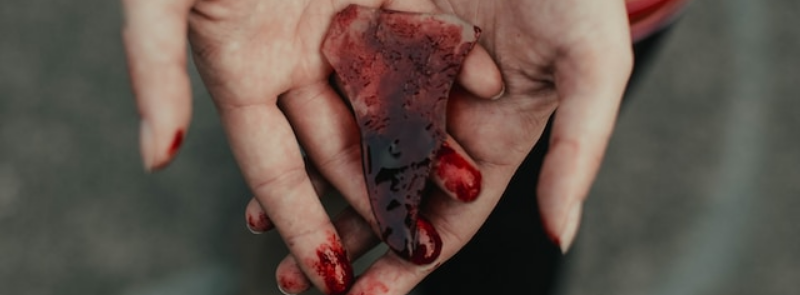
When It Occurs
Every March 1st
Timeline
Days Passed (1034)
# Hashtags
#SelfInjuryAwarenessDay #SelfHarmAwarenessDay
The 1st of March marks the annual observance of Self-Injury Awareness Day or Self-Harm Awareness Day, an international event aimed at increasing awareness of this issue. Various factors, life events, or underlying mental health conditions may drive individuals to engage in self-harm, often used as a coping mechanism by those experiencing emotional distress. While comprehensive global self-harm data is not readily accessible, studies estimate its impact on approximately 14.6 million individuals each year.
What is Self-Injury?
Self-injury, also known as self-harm, refers to the act of deliberately harming one's body as a way of coping with emotional pain, anger, or frustration. It can take many forms, including:
- Cutting: One of the most common forms, involving the use of sharp objects to break the skin.
- Burning: Using heat to inflict burns on the body.
- Hitting or bruising: Physically harming oneself through impact.
- Hair pulling or skin picking: Causing physical damage as a way of managing emotions.
- Ingesting harmful substances: Taking pills, drugs, or other toxic substances not intended for ingestion.
While self-injury is often a coping mechanism for emotional pain, it is usually a sign that the person is struggling with mental health issues such as depression, anxiety, trauma, or eating disorders. It is important to understand that self-harm is not necessarily a suicidal act, although people who self-harm may also experience suicidal thoughts.
Objectives of Self-Injury Awareness Day
The main goals of SIAD are:
- Raising Awareness: Many people do not understand self-injury or have misconceptions about it. SIAD aims to educate the public about what self-harm is and why people engage in it.
- Breaking Stigma: Self-harm is often associated with shame and guilt, making it difficult for individuals to seek help. By promoting open conversations, SIAD encourages people to talk about their experiences without fear of judgment.
- Providing Support and Resources: On this day, organizations and mental health advocates share resources for those affected by self-injury, including support groups, hotlines, counseling services, and advice for family and friends.
- Encouraging Early Intervention: The day also emphasizes the importance of recognizing the signs of self-harm and intervening early to provide the necessary support and treatment.
Awareness and Participation
On Self-Injury Awareness Day, various organizations in the UK, such as Mind, YoungMinds, Harmless, and The Mental Health Foundation, hold events, workshops, and online campaigns to educate people about self-harm. These activities include:
- Educational workshops and seminars: Focusing on understanding the psychological reasons behind self-harm and offering strategies for intervention and support.
- Social media campaigns: Using the hashtag #SIAD to spread messages of hope, awareness, and support for those struggling with self-injury. Participants often share their stories or resources on platforms like Twitter, Instagram, and Facebook.
- Fundraisers and charity events: Raising funds to support mental health services and organizations that provide help to individuals who self-harm.
- Awareness bracelets: Many participants wear orange awareness ribbons or bracelets as a visible sign of support for those dealing with self-harm.
Impact of Self-Injury Awareness Day
SIAD has helped raise the profile of self-injury as a serious mental health issue and encouraged more open conversations about the subject. It promotes greater understanding that self-harm is not an attention-seeking behavior but a cry for help that deserves compassion and professional intervention.
Some important points highlighted during SIAD include:
- The importance of empathy: Understanding that people who self-harm are in emotional pain and need support, not judgment.
- Encouraging help-seeking behavior: Many people who self-harm do not seek help due to the stigma surrounding it. SIAD encourages those affected to reach out to friends, family, or mental health professionals for support.
- Providing education on warning signs: Helping people recognize the signs of self-harm in themselves or others so that they can intervene early. These signs can include unexplained cuts or bruises, wearing long sleeves even in warm weather, or expressing feelings of hopelessness.
Support for Individuals Affected by Self-Injury
On Self-Injury Awareness Day, numerous organizations provide resources for people who may be affected by self-harm, including:
- Helplines: UK-based services like Samaritans (116 123) and Childline (0800 1111) offer confidential support to individuals in distress.
- Online forums and communities: Websites like Mind and The Mix provide safe spaces for individuals to talk about their experiences with self-injury and seek advice from others who understand what they are going through.
- Counseling and therapy services: Professional counseling can help people address the underlying emotional issues that lead to self-harm and provide healthier coping mechanisms.
Conclusion
Self-Injury Awareness Day is a crucial moment in the UK's mental health calendar, dedicated to breaking down the barriers of stigma surrounding self-harm. Through education, advocacy, and the promotion of open conversations, SIAD encourages compassion and understanding for those affected. The day serves as a reminder that with the right support and resources, individuals struggling with self-injury can find hope, healing, and healthier ways to manage their emotions.


